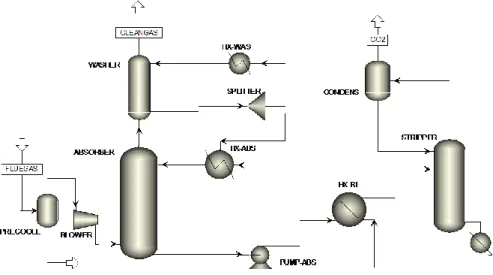Designing large-scale CO2 capture units with assessment of solvent degradation
Texte intégral
Figure




Documents relatifs
capture process has on the power plant and can thus be used to compare processes in terms of energy efficiency. Other values which are sometimes used as comparison between
Comparison mass spectra of the GC peak (MAE, m/z = 61 at rt = 8,3) with the NIST proposition (Top = mass spectrum of peak, bottom = superposition of unknown and
Chromatograms in SIM mode, after HS-SPME, of a mix of 10 pyrazines (pyrazine and 2- methylpyrazine were at 1 mg/L, other alkyl pyrazines were at 0.1 mg/L) in a water/MEA solution
Comprehensive monitoring of MEA degradation in a post-combustion CO 2 capture pilot plant with identification of novel degradation products in gaseous effluents.... Comprehensive
Those results showed this bench scale set up capacity to mimic observed degradation phenomenon on industrial pilot plant, thus validating the capacity of the lab-scale experiment
Le Décret n° 2010-1030 du 30 août 2010 de la loi Hôpital Patient Santé Territoire (HPST) reprend le Décret n° 2002-587 du 23 avril 2002 relatif au système
In nitrate-grown cells, the inactivation of nitrate reductase by sodium azide, tungstate, or mutation of the Nia1 gene further enhances the expression of the chimeric construct and
So far in this chapter we have introduced the problem that ballast degradation represents for the track performance and maintenance. We have seen that, in order to
